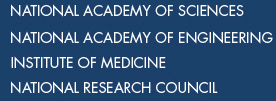|
|
|
|
|
|
|
News & Views item - July 2011 |
![]() Two Years and 282-Pages in Gestation the US National Academies' K-12 Framework
for Science and Engineering Education. (July 20, 2011)
Two Years and 282-Pages in Gestation the US National Academies' K-12 Framework
for Science and Engineering Education. (July 20, 2011)
 The
National Academies of the United States yesterday released its report
A Framework for K-12 Science Education: Practices, Crosscutting
Concepts, and Core Ideas.
The
National Academies of the United States yesterday released its report
A Framework for K-12 Science Education: Practices, Crosscutting
Concepts, and Core Ideas.
In introducing the document Ralph Cicerone, President of the National Academy of Sciences and Charles Vest, President, of the National Academy of Engineering write:
A Framework for K-12 Science Education Standards represents the first step in a process to create new standards in K-12 science education... there is a new and growing body of research on learning and teaching in science that can now inform a revision of the standards and revitalize science education.
The understanding of, and interest in, science and engineering that its citizens bring to bear in their personal and civic decision making is critical to good decisions about the nation’s future... The percentage of students who are motivated by their school and out-of-school experiences to pursue careers in these fields is currently too low for the nation’s needs. Moreover, an ever-larger number of jobs require skills in these areas, along with those in language arts and mathematics.
While in their executive summary the committee chaired by Professor (Emeritus) Helen Quinn, SLAC National Accelerator Laboratory, Stanford University state:
The overarching goal of our framework for K-12 science education is to ensure that by the end of 12th grade, all students have some appreciation of the beauty and wonder of science; possess sufficient knowledge of science and engineering to engage in public discussions on related issues; are careful consumers of scientific and technological information related to their everyday lives; are able to continue to learn about science outside school; and have the skills to enter careers of their choice, including (but not limited to) careers in science, engineering, and technology.
Currently, K-12 science education in the United States fails to achieve these outcomes, in part because it is not organized systematically across multiple years of school, emphasizes discrete facts with a focus on breadth over depth, and does not provide students with engaging opportunities to experience how science is actually done. The framework is designed to directly address and overcome these weaknesses.
The committee recommends that science education in grades K-12 be built around three major dimensions:

In giving a short explanation for its framework the committee continues:
Engineering and technology are featured alongside the natural sciences
(physical sciences, life sciences, and earth and space sciences) for two
critical reasons: to reflect the importance of understanding the human-built
world and to recognize the value of better integrating the teaching and learning
of science, engineering, and technology.
A coherent and consistent approach throughout grades K-12 is key to realizing
the vision for science and engineering education embodied in the framework: that
students, over multiple years of school, actively engage in science and
engineering practices and apply crosscutting concepts to deepen their
understanding of each fields’ disciplinary core ideas.
And then there is the realisation that the matter of obtaining, retaining and teaching the teachers is an overreaching challenge:
The committee emphasizes that greater improvements in K-12 science and engineering education will be made when all components of the system—from standards and assessments, to support for new and established teachers, to providing sufficient time for learning science—are aligned with the framework’s vision.
To realise the goals set out by the Framework will take unprecedented resources and multi-partisan cooperative drive on state and federal levels and it seems unlikely to be achieved either in the United States or Australia.
Perhaps in Switzerland or the Scandinavian countries.